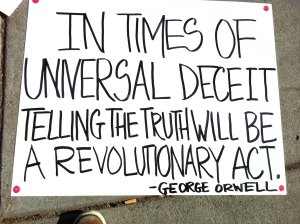If you’re converting a conference paper to a journal article then you need to have a clear idea of exactly what needs to be done. You need to know the difference between the two types of papers.
Now, there are multiple differences between journal articles and conference papers, but I’m only going to spell out two of the most important here.
- The journal article is often more specific, more bespoke, than the conference paper
A journal article is written for a specific audience.
Every journal has a specific area of interest, a community of readers. Converting a conference paper to a journal article means finding out about those readers. For a start the readers of your target journal will be interested in the core topic the journal covers. More importantly, because every journal has its own history of discussion and debate, then regular readers will know the journal’s particular take on the core topic, and the archive of contributions.
You might say that the regular readers of a journal are immersed in ongoing conversations. This perspective has some important implications. Depending on the area of knowledge, regular readers of a journal may:
- assume and refer to a set of near canonic texts and authors,
- understand some topics and questions to be more important than others, and
- share a strong sense of being a knowledge-building community.
While there are of course occasional readers who come to the journal as a result of a new interest or a search, the reviewers for the journal are most likely to come from the ‘insider’ journal community. And as these are the people who are going to read your paper first, it’s obvious helpful to understand what these regular readers, the insider journal community, might think about texts and authors, topics and questions and the knowledge that you refer to and build on.
But wait, there’s more.
The ‘insider’ journal community may hold unwritten, but nevertheless strong views about what a good journal article looks like. This may follow very conventional lines – the IMRaD structure for instance – or the regular readers and reviewers may be open to more experimental forms. They may have views about how much should be written about research design, or they may have difficulty dealing with papers that are not empirical, or they might require an engagement with theory or they could even find some research traditions unacceptable. So it’s helpful to check out any unwritten rules too. These can be seen by looking at what actually gets published.
It’s unlikely that your conference paper was written with this level of specificity in mind.
Now it may be the case that your conference paper was given at a specialist conference and to the very same people who regularly read the journal that you have targeted. Or you may well have presented the paper at a general conference but actually written it is as if it were for your targeted journal – this can be a very smart idea as it lessens the work in rewriting afterwards.
However, it may be – and this is often the case – that:
- The conference was more comprehensive than the specialist journal you are now aiming for.
- You wrote generally about your topic.
- You didn’t know who would turn up so you didn’t write for a particular audience.
- You hadn’t got as far as targeting the journal yet.
- The conference required an abstract and a paper length that were different from the journal you now have in mind.
So in order to convert the conference paper to a journal article you now have to make the paper fit for the journal you have in mind. This means ensuring that:
- the reworked paper says why the paper is important for the journal readers – you need to connect your topic to both the field and the journal’s concerns. This connection is made in the introduction, and it is returned to in the conclusion where the So What is spelled out. (Now you know this, then the following… )
- the reworked paper builds on what the readers are likely to already know about the topic. This means checking the papers already been published in the journal and ensuring that you make appropriate connections. This is done in the discussion of prior knowledge (often called literature review) as well as in the texts that you cite throughout the paper.
- the reworked paper is clear about the contribution the paper makes to what the readers already know – adding to, challenging or reframing what has been said up to now. The contribution is made either through reporting new empirical work, drawing on new literatures, bringing new theory and so on.
- the reworked paper conforms to the written genre expected in the journal – or you make it very clear that your paper isn’t in the usual format and perhaps explain why. This explanation s nearly always done early on so that readers know what is coming.
All of the above may mean that you need to do a little – or a lot – of work on the conference paper in order to bring it into the journal areas of interest – and thus give your work the maximum chance of success with journal reviewers.
2. The journal article attends to the weaknesses of the conference paper
Giving the conference paper can lead to important insights about how the subsequent journal paper needs to go.
There are generally three texts involved in a conference presentation – the actual paper, the slides and the talk. There may even be an additional handout. These additional texts – slides, handout and talk – are often prepared after the paper
is written.
You may find that these shorter texts are refinements of the original paper. That’s because when you make these additional texts you are thinking very deliberately about how you can make your point to the audience.
So the powerpoint and/or the talk:
- may get to the point more clearly
- may use more vivid metaphors
- may use more accessible language with more active voice, less thingified words, and less convoluted sentences
- may provide one preferred definition
- may summarise a literature section more economically
- may be more explicit about why a particular example is chosen and why it is important
- may answer the So What, Now What question more succinctly than in the paper conclusion – you may have a very clear take-home message.
These post conference paper-writing texts are very helpful pointers to the revision process.
You may also have been lucky enough to get some helpful questions after your presentation. The questions may indicate an area or areas where your thinking wasn’t yet clear enough or where you needed to provide more information, definition or precedent. While this might have been a bit traumatic at the time – “that’s a good question” you said your heart sinking at the fact you hadn’t actually thought about this – this is now extremely helpful information. Chances are that reviewers will have the same questions. So yippee, you now know some of the places where you need to do more work in order to make the conference offering into a robust journal article.
So there we are. Two things to think about in converting the conference paper to a journal article. And next instalment, I’ll come back to the question of writing in chunks.












What a coincidence that you post this as I’m putting the finishing touches on my conference paper -to-journal-article-attempt.
Thank you for the tips! I hadn’t thought about the kind of audience the journal article would need to target. Unfortunately, it’s too late now, but I think I did it sort of instinctively anyway.
LikeLike
Great tips! Thank you for posting this!
LikeLike
Thank you so much! 🙂
LikeLike
,
LikeLike